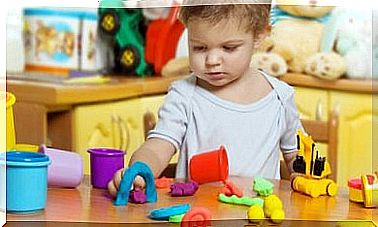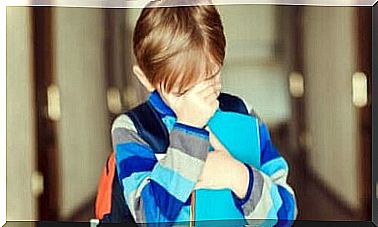Improvisational Theater For Children: What You Need To Know
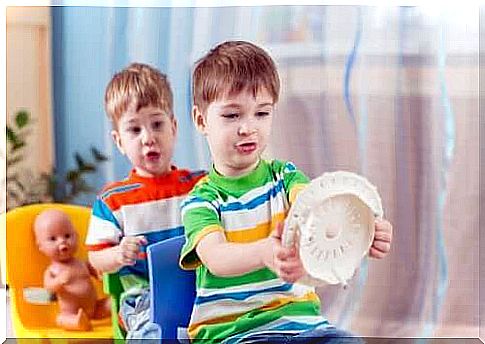
Children’s improv theater can serve as a powerful educational and development tool. In addition to teaching them about theater and acting, the improvised techniques they learn can act as a valuable resource when applied in everyday life.
Acting and improvising in the classroom or elsewhere stimulates children’s creativity. It promotes the mind and the use of the body as a means of expression.
Improvisation is at the heart of all artistic creations. This technique allows children to explore a world of possibilities while learning about their environment, their classmates and themselves.
Ultimately, improv theater is about playing a game with specific rules. This game allows children to immerse themselves in emotions, feelings and reality. Improvisation is focusing on the ‘here and now’ and as such can be understood as an exercise in mindfulness.
Improvisational theater for children
The main goal of improv exercises is learning to improvise, but there are other goals as well. In this article, we look at other important goals for each exercise.
It is essential to remind children that while improvising, the most important thing is to ‘let go’. This allows the child to understand that sometimes you shouldn’t overthink things but just let them happen.
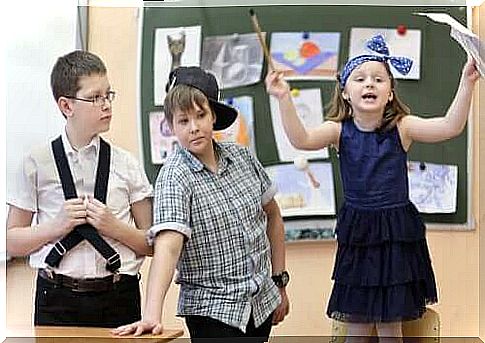
Group improvisation with music
- Number of children : you need at least four children in the group.
- Age : four years and up
- Recommended time : five minutes. If there are more children in the group, more time will be needed.
- Improvisational Goals : Developing physical expression through music. Creating and exploring music rhythms with the body. Let yourself be carried away by the music. observe and focus others.
Put on some swinging music and form a circle with the children. First, encourage them to move with the music. Start by making simple and repetitive movements to the beat of the music and let the children imitate you.
Then the children take turns performing a movement (also to the rhythm of the music) and the others have to imitate it. Lead the exercise by pointing to the child taking the lead.
If they find themselves blocking, remind them that it’s important to improvise, not think too much, and let them get carried away by the rhythm of the music.
Improvisational theater for children: exploring space
- Number of children : you need at least four or five children in the group.
- Age : six years or older.
- Recommended time : 10 minutes. If there are more children, you need more time.
- Improvisational goals : Paying attention to one’s physical and emotional state. Connecting with others. Expressing your own emotions while discovering those of others.
Instruct the children to walk around the room with some basic rules. They should try to occupy the entire space, and they should keep an equal distance from each other. That means there shouldn’t be any big gaps between them, nor should they get too close to each other.
As they walk through the room, tell them what they should do. Here are some guidelines:
- Walk in silence, just look at yourself and observe how you feel. Be careful not to clash with any of your peers.
- Keep walking and start making eye contact with others. Think about how you feel and what triggers eye contact with others.
- If the children hear a clap, they should greet the nearest child. Start with a short greeting and each time the greeting gets livelier.
- Add emotional situations to portray, such as walking when you’re happy, sad, angry, or scared.
The static scene
- Number : You need a minimum of four children in the group.
- Age : six years and up
- Recommended time : between 15 and 20 minutes. If there are more children, you need more time.
- Improvisational goals : working in silence. Create your own characters and a group scene. Learn to observe and look beyond appearances. Connecting with others and making appointments. Working with physical expression.
Divide the children into groups. If there are more children in the group for this activity, you can form more than two groups.
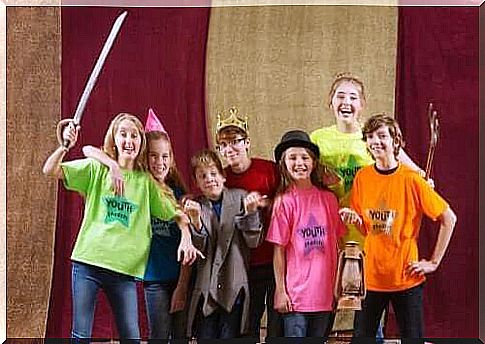
This activity consists of working in groups to create a static scene, something like a 3D photo. While one group is making the scene, the other children must remain silent with their backs to them. When the image is complete, the other children turn and observe it in silence.
To create the static scene, the group must decide who will play which character, the story they want to play, and what action each of them will perform in the picture.
After looking at the image for a while, the other children have to raise their hands and guess what they see. They can guess who the characters are, what they are doing and what is happening in the overall scene.
Finally , signal the children forming the image to bring the scene to life by starting to move. They can then explain what happened in the scene and compare it to what the actors were going for and what it looked like to the others.
Finally
Finally, it is important to remember that in children’s improv theater it is essential to emphasize mindfulness and the importance of thinking about your classmates.
The children must also be taught to be as generous to themselves as they are to others. There is no room for judgment. Ultimately, the goal is to get them swept up in this new sensation.
